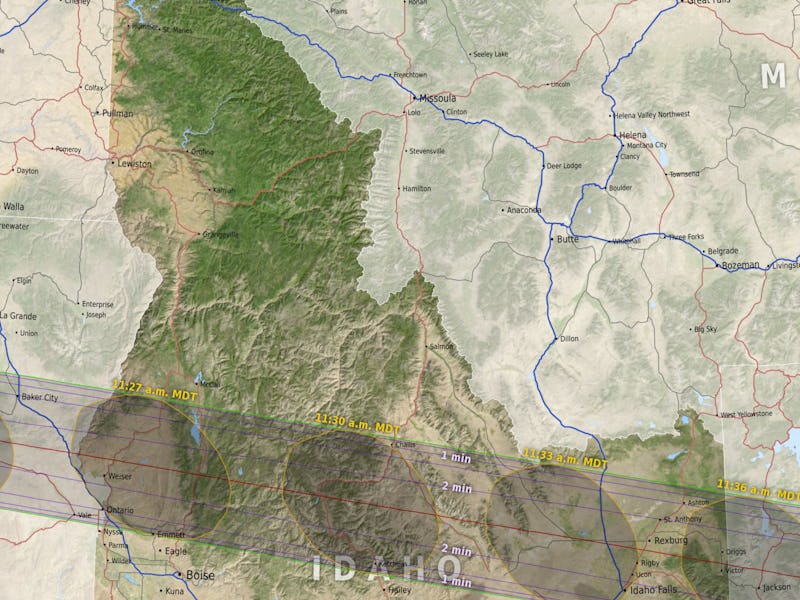What Time Is the Total Solar Eclipse Today? Depends on Your Zip Code
It depends on what part of America you’re standing in.

The long-awaited total solar eclipse will make landfall in the continental United States today at 9:05 a.m. For the next three hours, the eclipse will swiftly follow a narrow, 70-mile wide shadow across the country, turning day to night for all who are in its path.
To help ensure that you’re in the right spot at the right time, NASA provided an interactive map for each of the 11 states that the eclipse will be passing through, and the space agency includes the essential detail of time. You can also input your zip code into this nifty interactive tool from Vox to get the precise time of 100 percent obscuration.
Weather permitting, anyone standing within the path of totality will experience the moon entirely blocking out the sun. However, because the moon casts an oval-like shadow upon Earth’s ground, those standing closest to the exact center of the path will experience the longest duration of the eclipse, typically around two minutes. The outer edges of moon’s shadow are narrower, so if you’re standing near the edge of the path of totality, the eclipse will be shorter-lived, under one minute long.
Below is an example of NASA’s eclipse map of Idaho. On the bottom left is Boise, the state capital, which is about 20 miles outside the path of totality. If you were to drive 45 minutes northwest to Emmett, Idaho, you would be on the border of totality’s path, with an eclipse opportunity of under a minute, at around 11:28 a.m. Mountain Standard Time. The closer you get to the red line — true center — the longer the eclipse experience.
The eclipse will leave the country entirely in Charleston, South Carolina, at 2:48 p.m. Eastern Daylight Time.
For guidance on how to view the eclipse without searing your eyeballs, Inverse provides guidance on solar-viewing glasses and, also, the only time you can remove them during the eclipse.
For more information:
- Colanders, Welding Masks, and Other DIY Ways to View the Total Solar Eclipse
- How to Stream the Total Solar Eclipse If You Can’t Go Outside
- How to Watch the Eclipse With Your Phone and Not Sunburn Your Eyes
This article was originally published on July 28, 2017 and has been updated with more information.